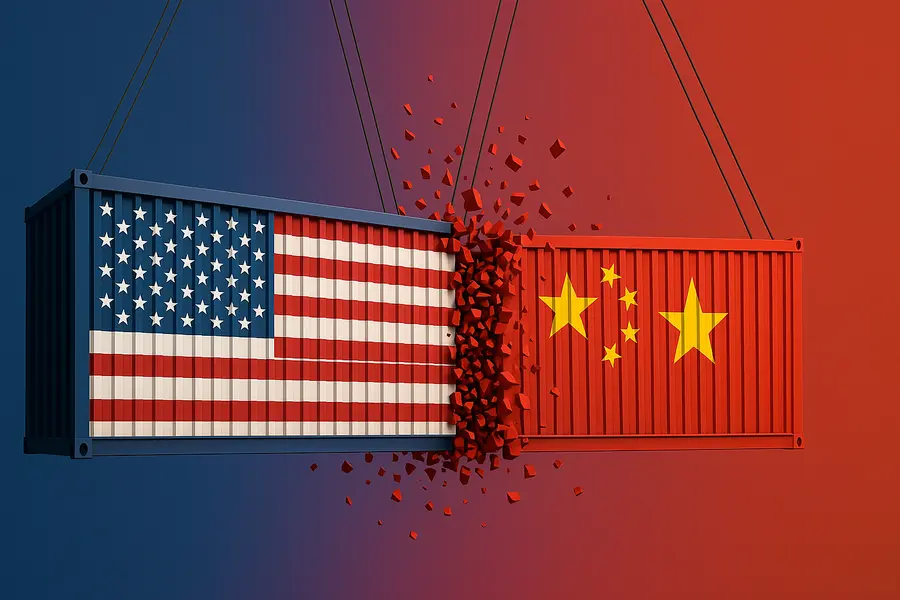U.S. Escalates Trade Tensions with 104% Tariff on Chinese Imports
The United States has taken a bold step in its trade war by imposing a staggering 104% tariff on imports from China, marking the most aggressive move yet in President Trump's global trade strategy. This development has sent shockwaves through financial markets, causing U.S. stocks to drop sharply and reversing earlier gains as optimism for tariff rollbacks diminished. Beijing has condemned the tariffs as "economic blackmail" and has vowed to retaliate, pledging to fight against the imposed duties.

Impact on U.S.-China Relations
As the tariffs take effect, the U.S. administration is engaging in negotiations with key allies, including South Korea and Japan, while Italian Prime Minister Giorgia Meloni is set to visit Washington next week. However, the White House has made it clear that it has no plans to engage in talks with China, signaling a shift in diplomatic relations. U.S. Trade Representative Jameson Greer defended the tariff strategy, claiming that it is already yielding positive results, including a halt to planned layoffs in Tennessee’s auto production sector and a boost in hiring in Indiana.
Despite these developments, skepticism looms among senators and economists regarding the broader economic implications of the trade war. Concerns are rising about the potential for a global economic slowdown driven by escalating tariffs, which could adversely affect both emerging markets and the U.S. economy.
Opportunities Amidst Challenges
While the tariffs pose significant challenges, they also create opportunities for other nations. Countries such as Brazil, Egypt, and Turkey, facing lower tariffs of around 10%, are looking to capitalize on export opportunities, particularly in agriculture and textiles. India, despite facing a 26% tariff, is exploring potential gains in manufacturing, while Vietnam and Bangladesh adapt to the steep tariffs of 37% and 46%, respectively.
Global Economic Outlook
Analysts warn that the risk of a tariff-driven global slowdown could ripple through economies, affecting not only emerging markets but also the United States. As the White House continues to navigate its trade policy, the lack of a coherent message regarding the purpose and duration of the tariffs raises questions about the long-term strategy. The uncertainty surrounding whether these tariffs serve as a negotiating tool or signal a shift towards a protectionist economic model reminiscent of the 1870s adds another layer of complexity to the current trade landscape.
Conclusion
As the U.S. intensifies its trade offensive against China with unprecedented tariffs, the implications for global trade dynamics are profound. The potential for economic disruption looms large, prompting countries to reassess their trade strategies. The unfolding situation serves as a reminder of the delicate balance between protectionism and global interdependence, as nations strive to navigate a rapidly changing economic environment.
What's Your Reaction?















